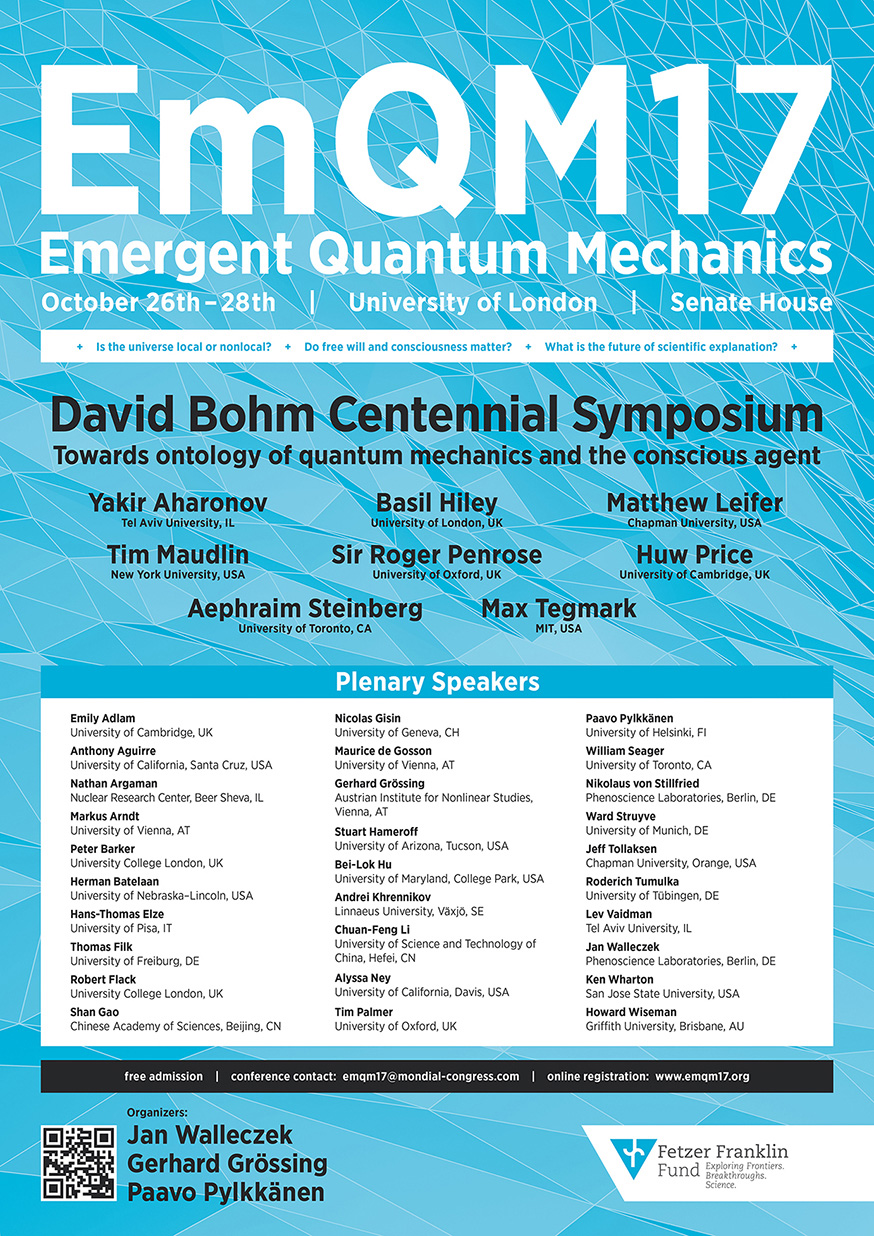Paavo Pylkkänen
University of Helsinki, FI, and University of Skövde, SE
The quantum potential – classical or something entirely new?
Presentation
Abstract
A common criticism of Bohm’s 1952 causal (quantum potential) interpretation of quantum theory – even among Bohmians – is that it is trying to force quantum phenomena into a classical physics framework, thus diluting the quantum revolution. However, especially in his later work Bohm emphasized the radically non-classical nature of the quantum potential Q. It is true that in this approach the basic equation of motion [i.e., m × dv/dt = grad (V) – grad (Q)] has the form of Newton’s laws. However, Bohm argued that this form alone is not enough to determine that the general structure of classical physics will hold. To obtain determinism in Newtonian physics, one has to assume certain restrictions on the forces. However, the quantum potential approach goes beyond such restrictions and thus an entirely new kind of physical law is implied. For one thing, Q depends only upon the form, or the second spatial derivative of the amplitude R of the ψ-field. This form, in turn, reflects the form of the environment (such as the presence of slits). Could it be that the ψ-field is literally ”in-forming” or putting form into the activity of the particle, rather than pushing and pulling the latter mechanically? Bohm and Hiley called this ”active information”, because here information acts to bring about changes in the behaviour of the particle. Note also that we can now make sense of the notorious multi-dimensionality of the ψ-field for the many-body system. For here the wave function describes an information structure that can quite naturally be considered to be multidimensional. The approach also has holistic features that go beyond classical physics. In the case of a single particle, because Q only depends upon the form of the ψ-field, it does not necessarily fall of even if the intensity of the ψ-field becomes weak as the field spreads out. This means that even very distant features of the environment (e.g. slits) can have a strong effect upon the particle. More radically, for a many-body system the forces as determined by Q depend on a quantum field of active information ordered in the 3N-dimensional configuration space. This involves a non-local connection between particles that depends on the quantum state of the whole, in a way that cannot be expressed in terms of the relationships of the particles alone. Such priority of the whole goes strongly against the mechanistic spirit of classical physics. Moreover, the idea that information (which can be seen as a primitive mind-like quality) might play a role at the quantum level is potentially important for many philosophical problems, as Bohm himself observed. For example, the extension of Bohm’s quantum ontology seems to enable a new view of mental causation, i.e. how mental states might have genuine causal efficacy. This paper discusses the notion of active information and its potential relevance to philosophy of mind. (https://philpapers.org/profile/8537)
![]()


